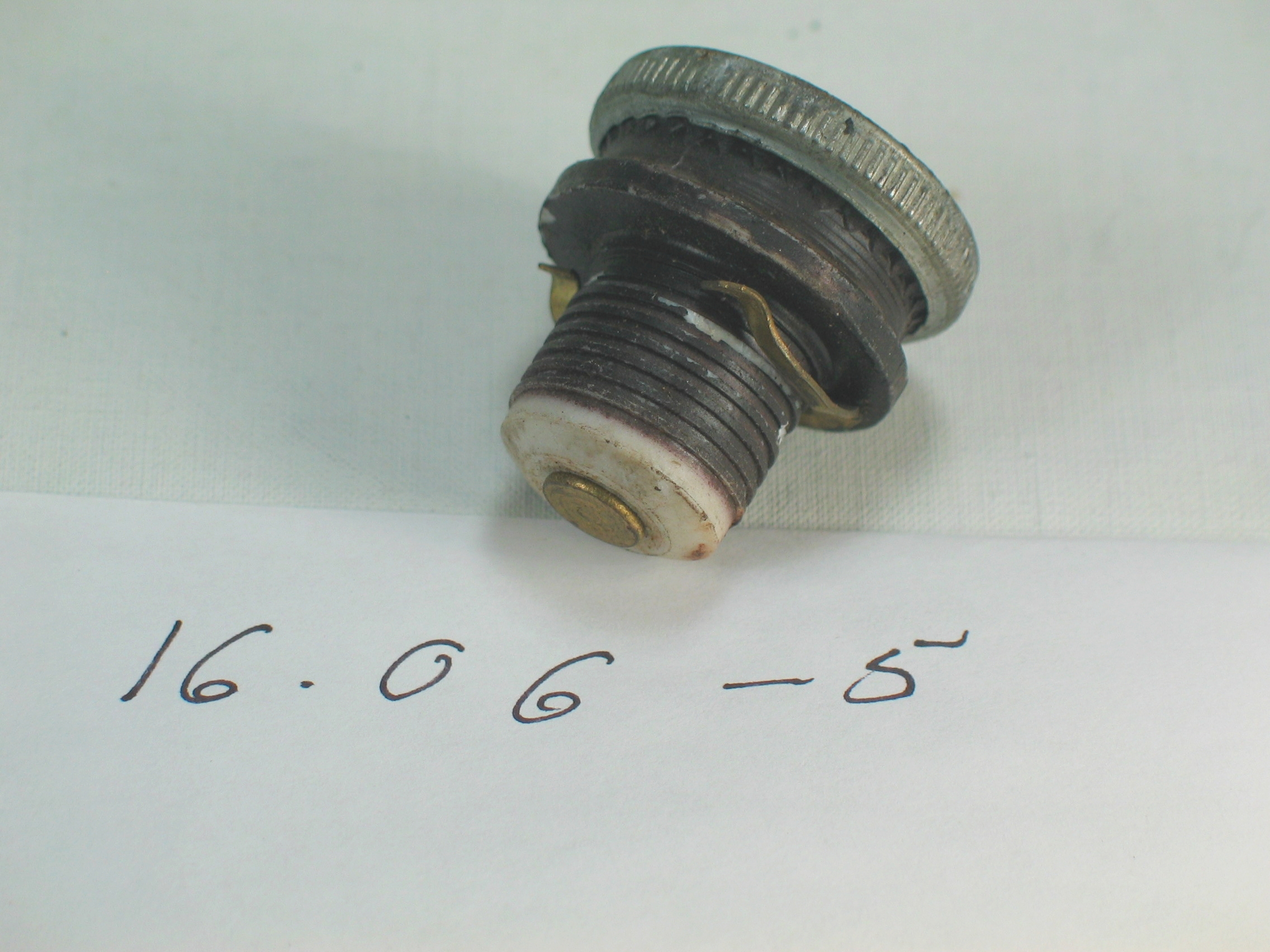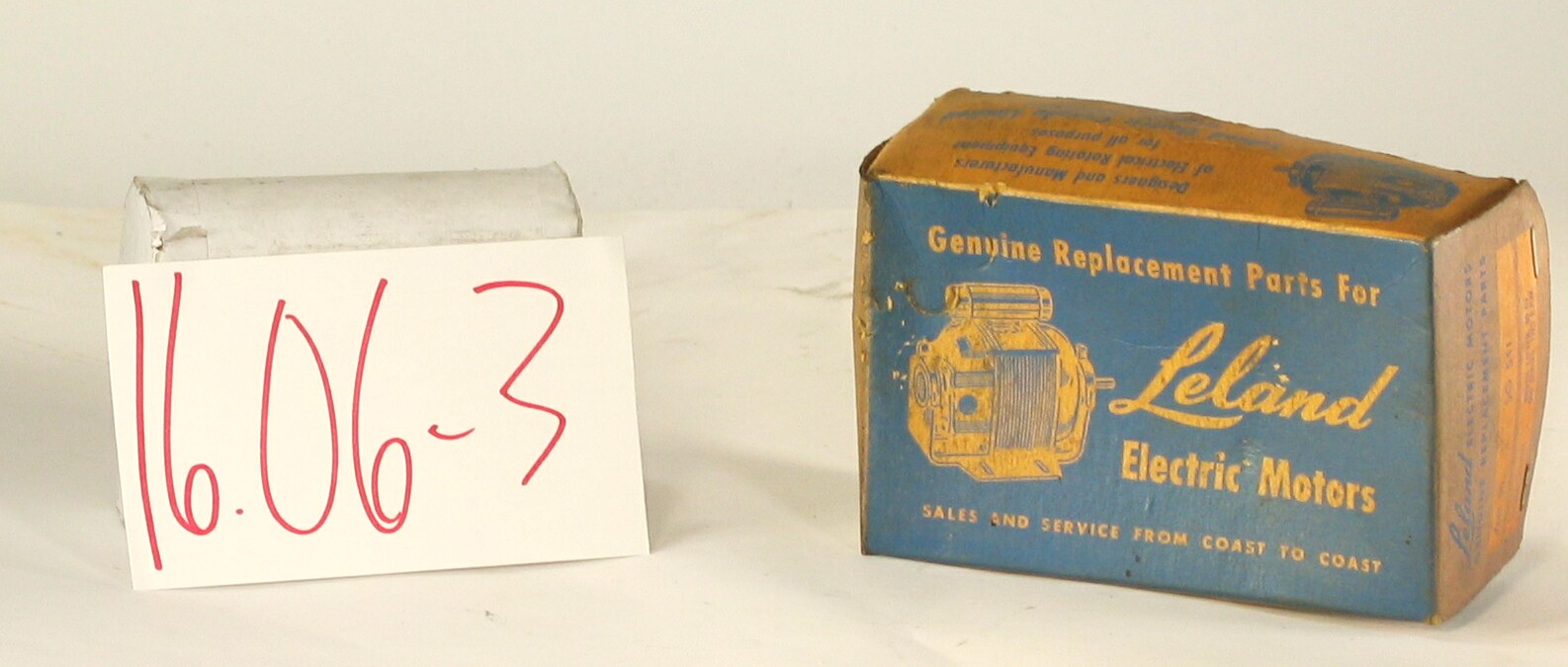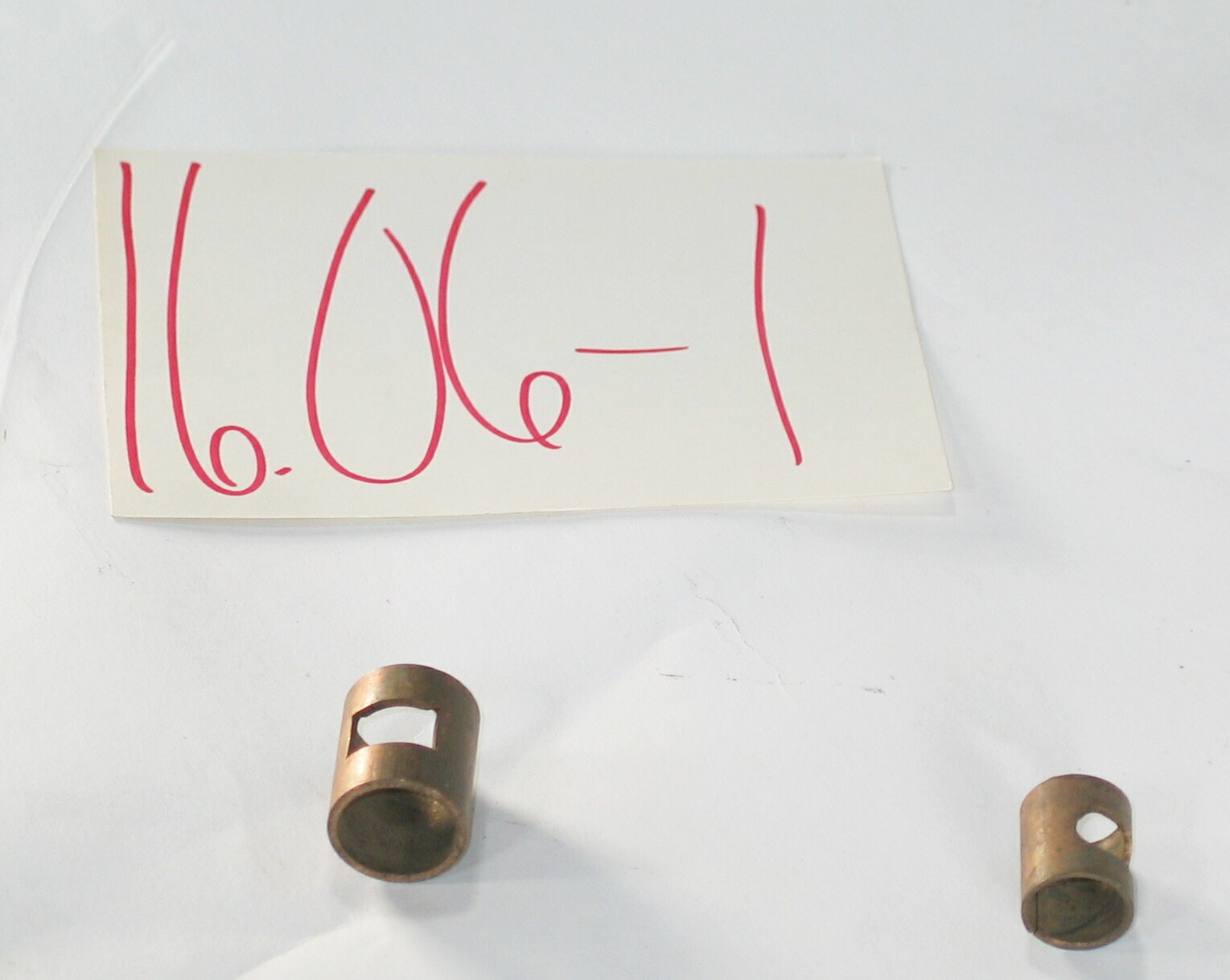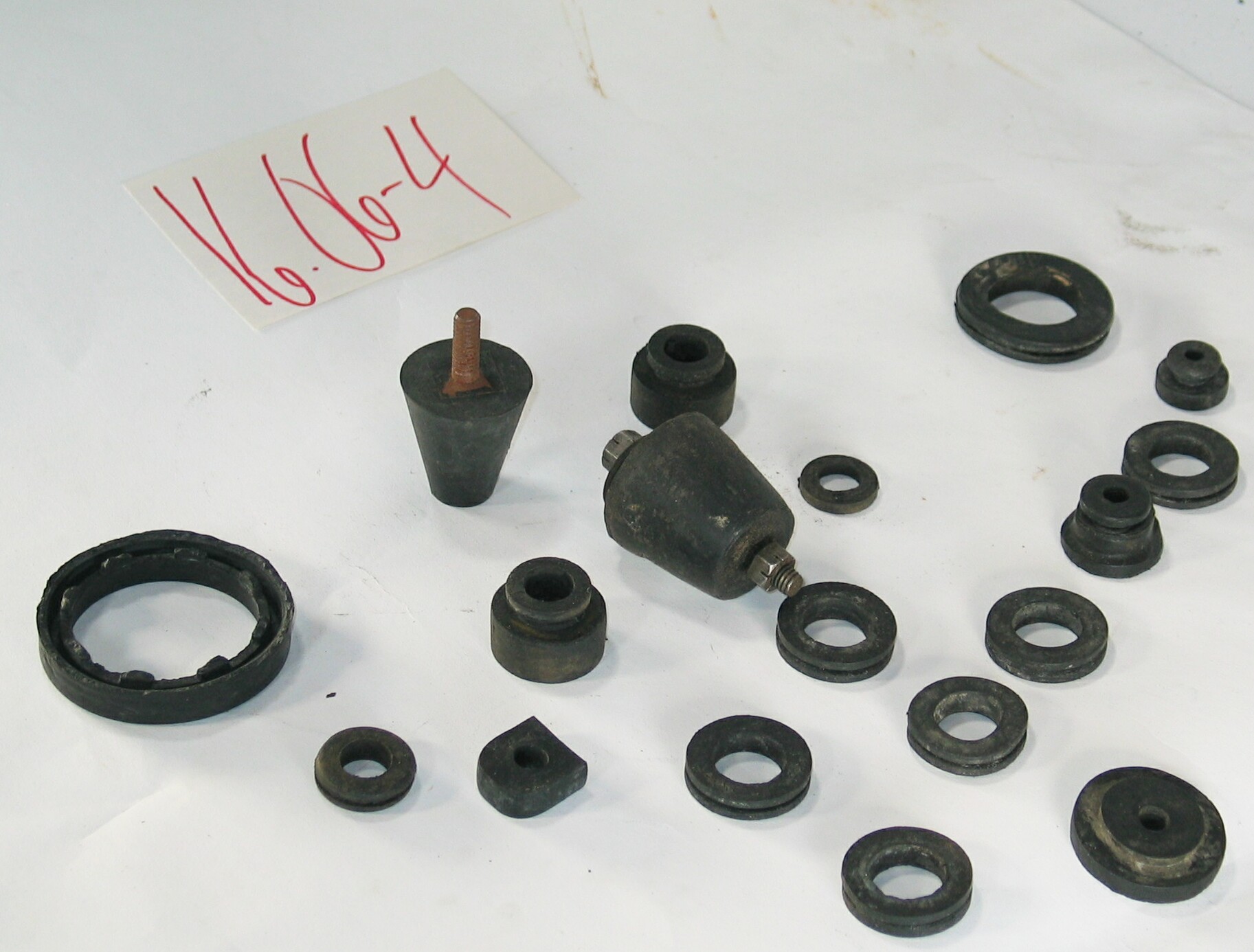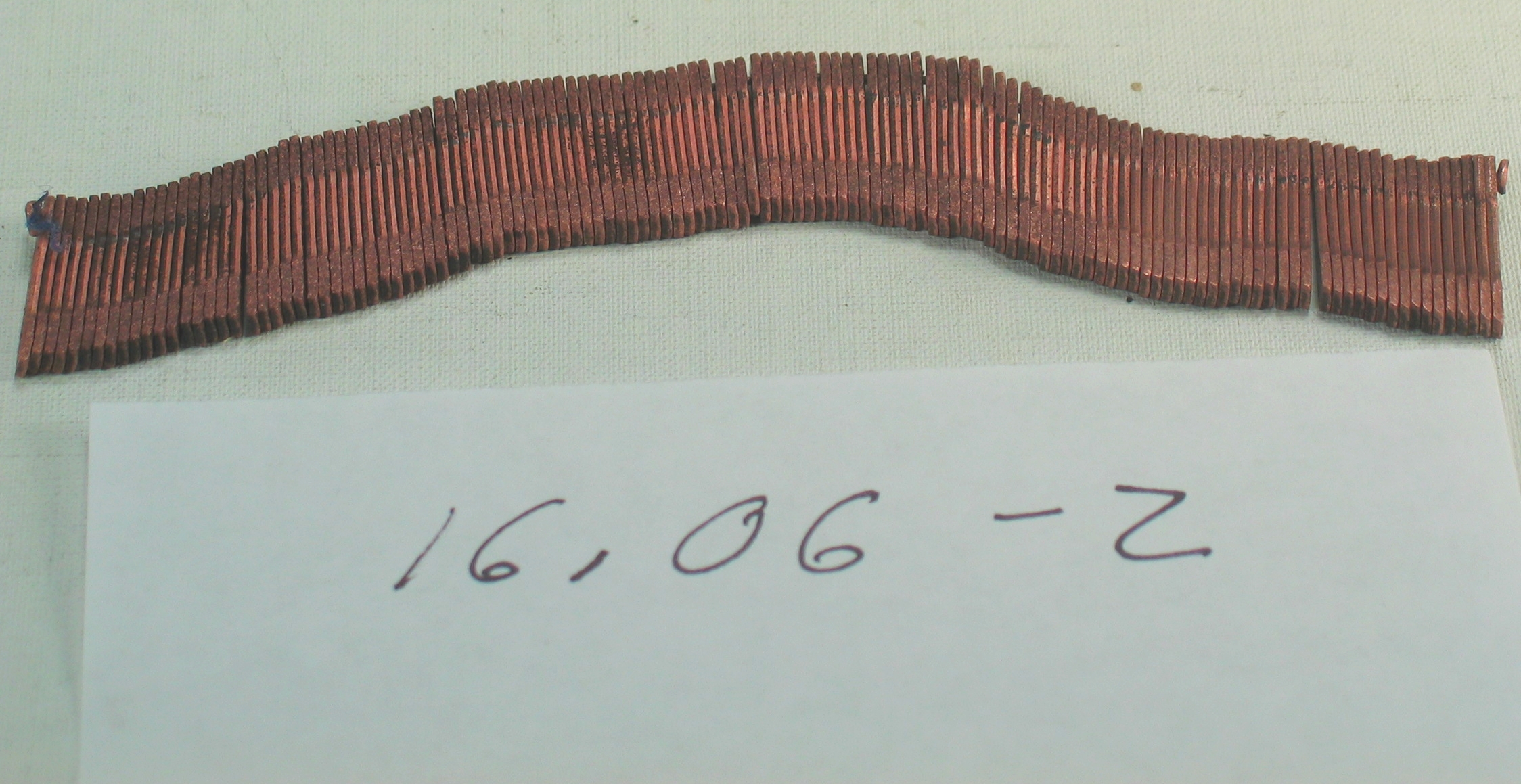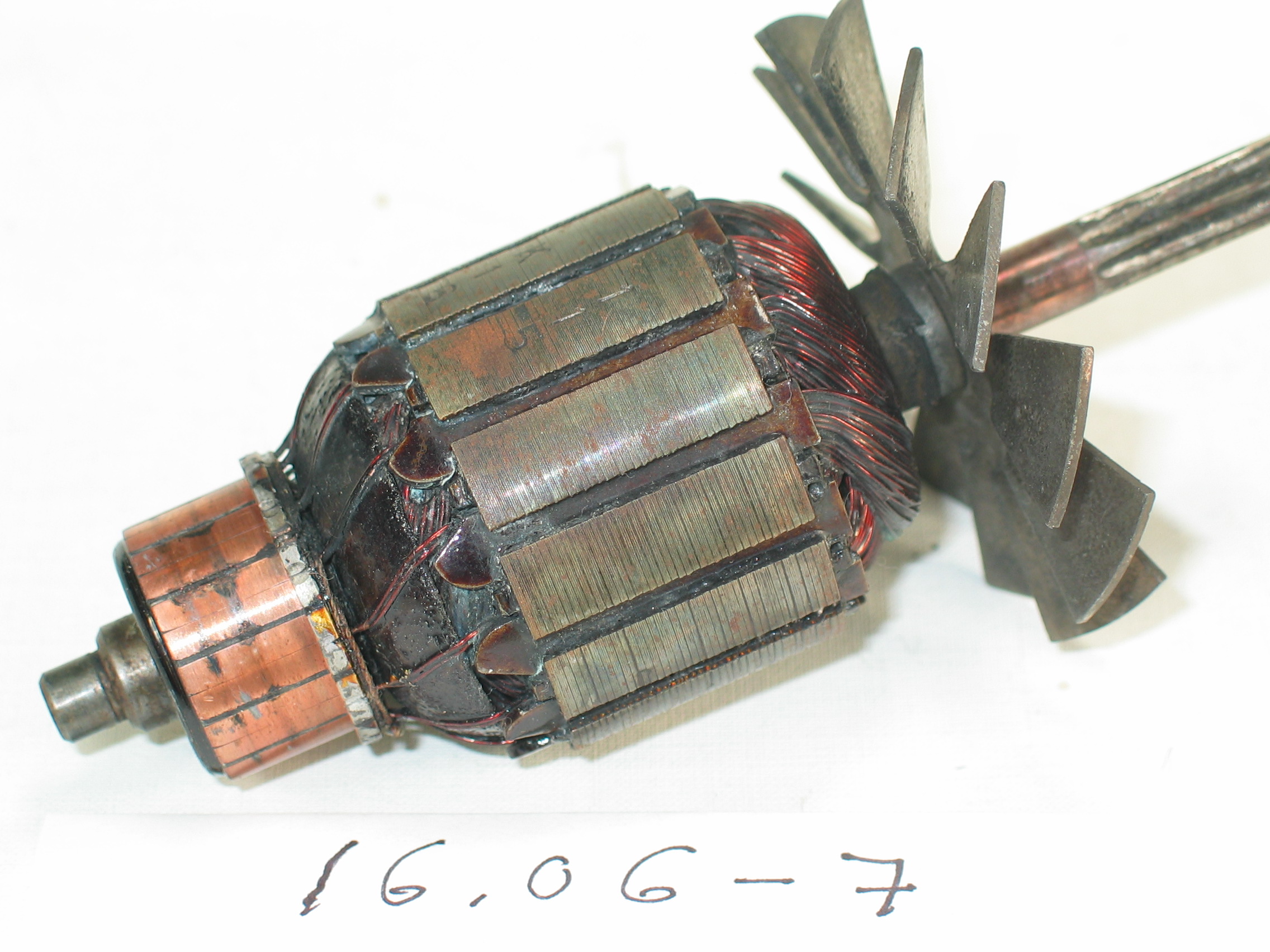16.06-6: Klixon 1948 Automatic Re-Closing, Overload Protector
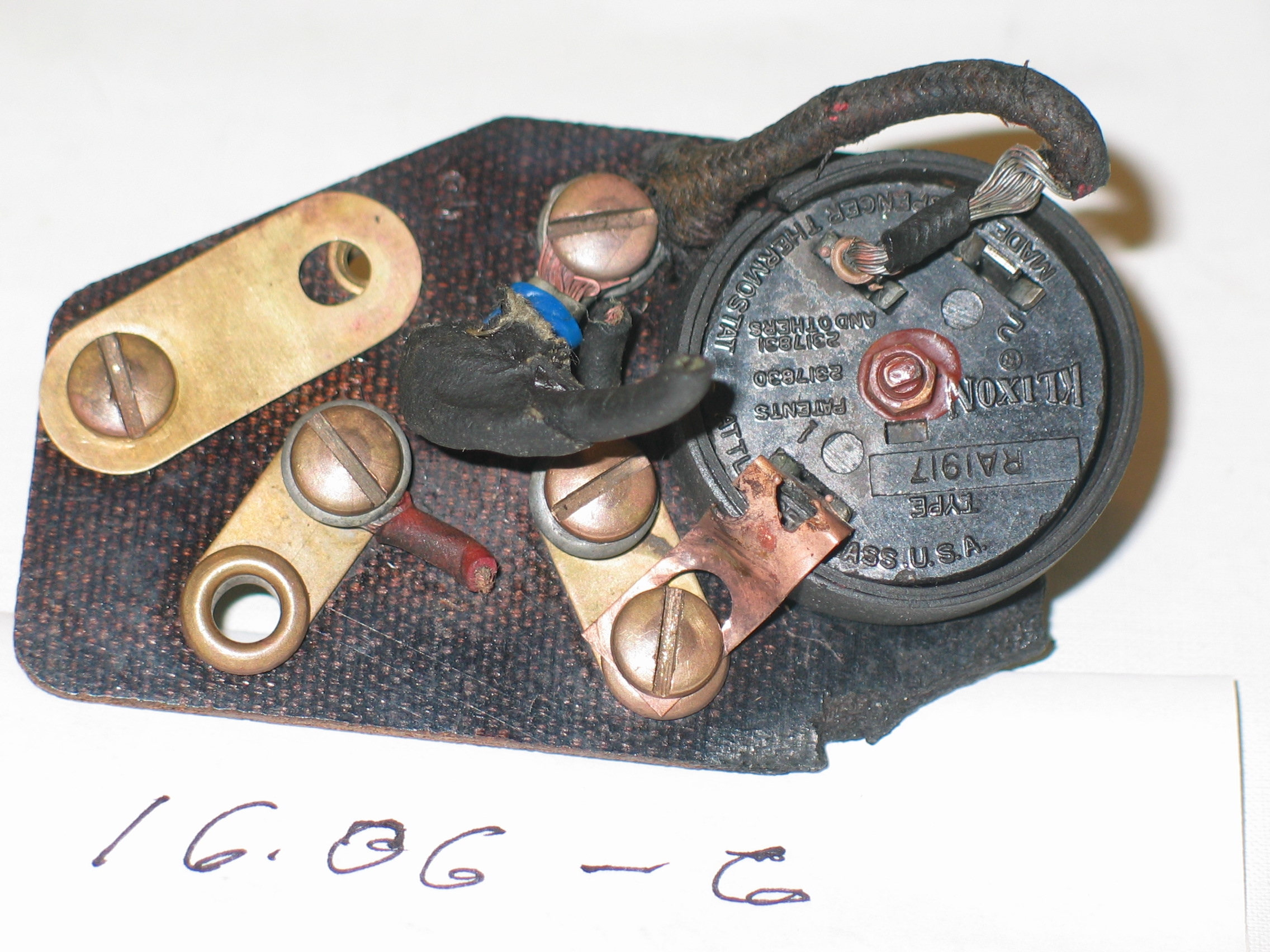
| HHCC Accession No. 2006.207 | HHCC Classification Code: 16.06-6 |
|---|
Description:
Thermal disk, snap action, automatic re-closing, overload protector mounted on original motor manufacturer’s mounting plate, A key step in the evolution of personal and property damage protection resulting from FHP electric motor overload [over heating]. Overload, safety devices that re-closed automatically after cooling, built into the compressor motor itself, would be the final step in the development of refrigeration equipment that would operate un-attended, fully protected, while cycling automatically to maintain a set refrigerated temperature.
Group:
16.06 Electric Motors - Components and Parts
Make:
Klixon
Manufacturer:
Spenser Thermostat, Attleboro, Mass, USA
Model:
RA1917
Serial No.:
Size:
Assembly 4 x 2 x 1 inch h
Weight:
2 0zs.
Circa:
1948
Rating:
Exhibit, education, and research quality, illustrating the design and construction of early automatic, thermal disk actuated, FHP overload motor protection devices for the Canadian home
Patent Date/Number:
2317830, 2317831 [1943]
Provenance:
From York County (York Region) Ontario, once rich agricultural hinterlands, attracting early settlement in the last years of the 18th century. Located on the north slopes of the Oak Ridges Moraine, within 20 miles of Toronto, the County would also attract early ex-urban development, to be come a wealthy market place for the emerging household and consumer technologies of the early and mid 20th century.
This artifact was discovered in the 1950’s in the used stock of T. H. Oliver, Refrigeration and Electric Sales and Service, Aurora, Ontario, an early worker in the field of agricultural, industrial and consumer technology.
Type and Design:
Brown Bakelite body White porcelain core Mica viewing window
Construction:
Material:
Special Features:
Accessories:
Capacities:
Performance Characteristics:
Operation:
Control and Regulation:
Targeted Market Segment:
Consumer Acceptance:
Merchandising:
Market Price:
Technological Significance:
The ‘fusetat’ [later fusetron] tells important stories of technological evolution and advancement in personal and property protection, an early step on the way to inherent automatic overload protection [see ID#331]developed for FHP motors for use in Canadian homes on refrigerators and other electrical appliances. As is typically the case in technological innovation, advancements are made in terms of historic experience and current practices. Thus, the fusetron was conceived as a fuse - a special kind of ‘slow-blow’, throw-away fuse. It was engineered to take the high starting current associated with inductive loads [electric motor loads], but to open circuit in response to prolonged over load/overheat conditions, rather than a single surge [spike] of high current. However, because it performed much like a fuse in other ways, it was a one-time , throw-away device - lacking the ability to re-close. As a consequence many homeowners would find their refrigerator off, with resultant food spoilage. The inherent motor overload protector with an automatic recycling capability [See ID#331] would still be close to a decade away, before it saw wide spread application
Industrial Significance:
Moving electro motive equipment into the Canadian home brought with it many engineering challenges, not the least of which was the matter of automatic overload protection, as a means of helping to prevent property damage and personal injury in the home. So long as motive equipment remained in an industrial setting under the watchful eye of an operating engineer, these were relatively minor design concerns. A number of engineering innovations followed the introduction of the fusetron providing increasingly better inherent overload and overheat protection [see for example ID# 331, 301, 303]
Socio-economic Significance:
Socio-cultural Significance:
Donor:
G. Leslie Oliver, The T. H. Oliver HVACR Collection
HHCC Storage Location:
Tracking:
Bibliographic References:
‘Fractional Horsepower Electric Motors’, Cyril Veinott, McGraw Hill New York, 1948 ‘Rewinding Small Motors’, Daniel Braymer and C.C. Roe, McGraw Hill, 1932 ‘A course in Electrical Engineering, Volume II, Alternating Current’, Chester Dawes, McGraw Hill, 1934, Starting single Phase Induction Motors, P. 362. ‘The Fractional Horsepower Motor and its Impact on Canadian Society and Culture’, G. Leslie Oliver, Material History Review, Vol. 43, Journal National Museum of Science and Technology, 1996.
